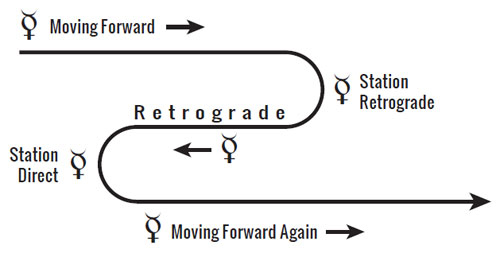The Solar System consists of interrelating electromagnetic fields. The components of these fields are defined by the eight individual planets along with the two Lights – the Sun and Moon. A planet is the visible core of matter, energy, and intelligence, similar to an atom whose protons and neutrons are orbited by electrons  that produce electrical impulses. The fields are encoded impulses perpetually traveling through space with their focus on encompassing the reaches of the solar system including Earth. The planets’ waves of energy interact among themselves to coalesce into a complex messaging system and it is the astrologer’s task to decode their intent and purpose.
that produce electrical impulses. The fields are encoded impulses perpetually traveling through space with their focus on encompassing the reaches of the solar system including Earth. The planets’ waves of energy interact among themselves to coalesce into a complex messaging system and it is the astrologer’s task to decode their intent and purpose.
The emanation of the intelligent, magnetic fields permeates the solar system, and the earth becomes immersed in its collective energies. The effects of these interacting forces are felt strongly when planets align at geometric angles in relationship to natal planets. In astrological terms, these configurations are called major aspects. The five geometric angles of import are the conjunction, sextile, square, trine, and opposition. These are defined by the planets that are 0, 60, 90, 120, and 180 degrees apart, yet have a 10-degree orb of allowance for the planets, 12.5 for the Moon, and 17 degrees for the Sun. The electromagnetic fields are spherical and three-dimensional.
The human body acts as an antenna absorbing the planetary emanations through the energy centers of the body also known as the chakra system. These energies are usually felt as intense pressures and are felt as emotional stresses within the body and mind, similar to when the opposite poles of a magnet are exposed to each other but not yet actually touching. This magnetic pull is often misinterpreted as being caused by a physical illness or mental pathology. It can be accompanied by anxiety leading the individual to seek to avoid or suppress their emotional and bodily feelings. As planets move into exact aspect positioning they become indicators of an auspicious time for personal growth, however, the ego wishing to remain in a pleasant state often resists these precious times of personal evolution. Planetary interactions communicate in an astrological, geometric language that astrologers can interpret for a person wishing to understand the meaning of the profound feelings that are generated by them.
An astrologer should look to fast-moving progressions and slow-moving transiting planets to identify the sources and meanings of these periodic crises in consciousness. The planets, as representatives of higher intelligent forces, act in this way to gain the attention of the individual. An experienced astrologer is the interpreter of the intense and demanding call to transformation that the planets have in store for the recipient of the forces at play in the solar system.





